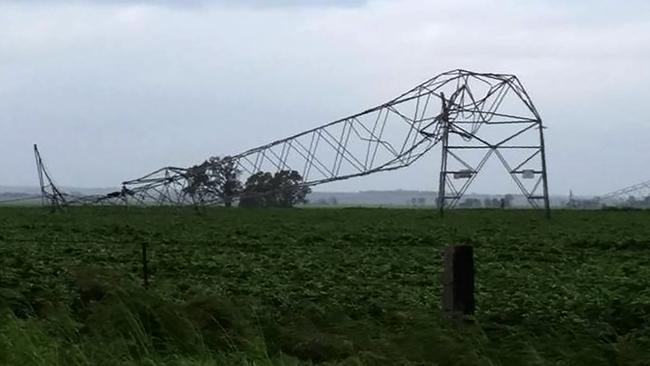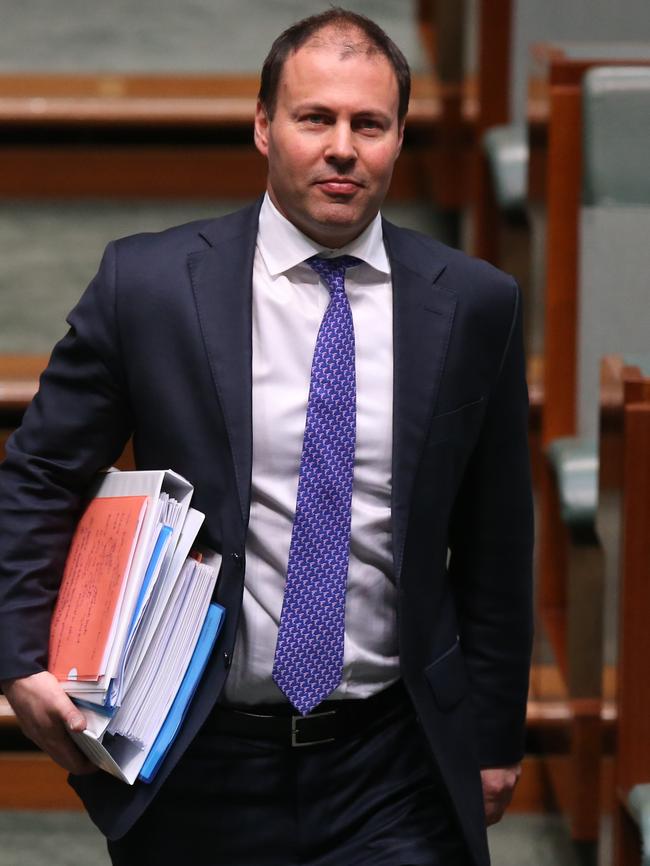Energy Intensity Scheme — instead of carbon tax — pushed for Australia’s struggling electricity market
A PRICE on carbon emissions has been considered political dynamite. But as Australia deals with a broken energy system, it’s come up again — although in a slightly different way.
SA News
Don't miss out on the headlines from SA News. Followed categories will be added to My News.
- Danger electricity will fail during fire season
- 200,000 without power after major blackout
- BHP: Power crisis is crippling industry
- Abbott heats up over scrapped Green Army
PUTTING a price on carbon emissions has been considered political dynamite. But as Australia deals with a broken energy system, it’s an idea being toyed with once again — although in a slightly different way.
How does the National Energy Market work?
The national energy grid links states through a series of interconnectors.
The NEM is one of the world’s longest interconnected power systems, stretching from Port Douglas in Queensland to Port Lincoln and across the Bass Strait to Tasmania.
Price dictates where energy is generated. In SA, once electricity demand outstrips wind and solar
production, energy tends to be imported from Victoria’s coal generators. The imported coal power is cheaper than electricity produced locally using gas.
In 2015/16 36.4 per cent of SA electricity generation was gas, 34.7 per cent was wind, 20.9 per cent was coal and 7.5 per cent was rooftop solar

Why does SA seem to be such a basket case?
Huge power price spikes in July threatened to force the state’s biggest employers to shutdown.
A statewide blackout in September was followed by another massive blackout which cut off power to about 200,000 homes.
SA has been described as the “canary in a coal mine” because the troubles plaguing our energy system should serve as a warning to the rest of the country.
SA’s hasty embrace of wind farms was brought on by the Federal Government’s Renewable Energy Target scheme and eased state planning law.
The RET provides renewable generators with financial incentives for each megawatt-hour of renewable electricity produced. This means that renewable energy can be sold to the grid for virtually nothing while the generator still earns money through the RET.
Mr Wood said an unintended outcome of the RET was to contribute to pricing gas out of the market.
“Through the RET there’s nothing being done to say gas is lower emissions than coal and much more flexible than some renewables and has an important role,” he said.
Power prices have increased since the closure in May of SA’s last coal-fired power station.
Without a stable source, the state has been at the mercy of wind and solar, which cannot produce power on demand.
Grattan Institute Energy Program director Tony Wood said SA had become dependant on wind and the interconnector with Victoria. But if the wind was not blowing or there were problems with the interconnector, then “gas sets the price”.
What is the Government doing to fix the problem?
The Federal Government has commissioned a handful of reviews into the energy system and climate policies as it has conceded the two must work together.
Federal Energy Minister Josh Frydenberg yesterday also announced the terms of reference for a review of climate change policies to be led by the Department of Environment and Energy.
He said a number of bodies had recommended an Energy Intensity Scheme and that the Government was willing to consider the evidence as part of the climate review.
The Prime Minister and state premiers will on Friday discuss the preliminary findings of an independent review of the country’s energy system headed by Australia’s chief scientist Dr Alan Finkel.
Mr Frydenberg said that inquiry would provide a “blueprint” to guide reforms of the national market, ensuring energy security and affordability as the country relies more on renewables.


What is an Energy Intensity Scheme?
An Energy Intensity Scheme can be confined to the energy sector, which creates about one third of Australia’s carbon emissions
The Government would set a baseline for allowable tonnes of CO2 output per megawatt hour of electricity. Any business producing less CO2 than the baseline would earn “credits” which could be sold to businesses which produced CO2 above the baseline.
Mr Wood said that currently Australia’s average energy intensity was 0.9 tonnes of CO2 per megawatt hour. Wind and solar it was 0, gas 0.4, black coal 1 and brown coal could be as high as 1.6.
The baseline could be set, as an example, at 0.7 tonnes of CO2 per megawatt hour which would allow gas and renewable generators to create credits while coal generators would have to purchase them.
In other words, gas and renewable generators would earn credits, while coal generators would have to purchase them.
The criticism of the scheme is that the Government has less control on the overall emissions created by the sector.
How is it different to a carbon tax?
Mr Wood said under a carbon tax or an emissions trading scheme, the cost of a carbon was passed on to customers. The Government collected the revenue which it could then hand out to low-income households or to others as it saw fit.
Under an EIS, the cost and revenue from emissions permits remain within the industry.
How would an EIS impact on household bills?
Mr Wood said an EIS would have a lower impact on household and business bills, particularly in the short-term.
Because it would provide an incentive for more consistent gas generation, it should help limit price spikes.
But Mr Wood said over time, a credible EIS would lower the baseline so it would eventually become so low that it worked similarly to the other schemes as no emitters would earn credits.
What happens next?
The various Government reviews are due to be released within the next few months.
Once they have all been released the politicking will begin.
“This whole area is a political minefield. Back in 2007/08 between the Labor Party, the Green and the Coalition they managed to stuff the whole idea of an emission trading scheme up entirely,” Mr Wood said.
“An EIS does appear more politically acceptable because it won’t have a big impact on bills upfront and the Government doesn’t collect any money.
“Pragmatically the Labor Party would be inclined to support this scheme as long as it’s credible and Australia is on track for more stringent emissions reduction targets.”


